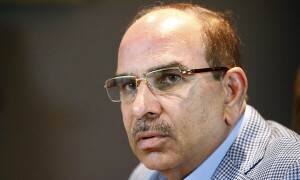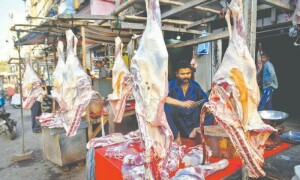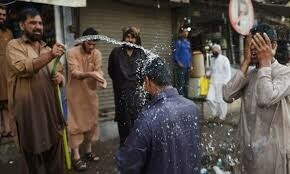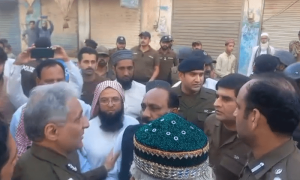THE battle for the youth vote, especially in Punjab, continues to rage in the run-up to the general elections. Each week, news outlets publish articles warning that youth ballots could upend the political status quo. This would not be inconceivable: about 47 per cent of all registered voters are between the ages of 18 and 35.
But Pakistani youth are highly unlikely to vote as a bloc — ethnicity, geography (urban vs rural), and familial pressure to vote for the same parties one’s forefathers voted for are all likely to trump demographic considerations at the ballot box. This is especially true because despite constructing ‘the youth voter’ as a new and integral phenomena of the 2013 elections, parties have done little to cater to this type of voter. In the absence of a last-minute rethink, the youth vote will be far less transformative than we have been led to believe.
Until now, various factors have made the youth the darlings of the Pakistani electorate. First, there are the statistics: 59 per cent of Pakistanis are below the age of 24, and a whopping 67 per cent are under 30. Civil society organisations and donor agencies have repeatedly argued that Pakistan’s youth bulge is its greatest opportunity (or challenge, depending on how it is managed). Political parties may not have internalised that message, but they could hardly ignore the impressive numbers.
Second, there’s the economy: the number of people in the 15-49 age group, which comprises the country’s labour force, is projected to nearly double by 2050. In order to be a demographic dividend rather than a disaster, this kind of growth requires a robust strategy for employment generation. None of our political parties have demonstrated the vision or courage to implement such a strategy, but by embracing Pakistani youth they hope to seem economically well-attuned — an important trait at a time when growth has slowed to about three per cent per year.
Third, there’s bureaucracy: the Ministry of Youth Affairs came into being in November 2005, and the first National Youth Policy was approved in 2009. Following the 18th Amendment, the youth ministry was devolved and provincial-level youth ministries have been struggling to formulate and implement unique policies over the past year or so. Forcing bureaucrats to ponder youth issues was bound to have a ripple effect, and ‘youth’ as a political concept seems to have caught on.
Finally, there’s globalisation. Between the Arab Spring and United States President Barack Obama’s election-winning army of young volunteers, youth have emerged as a political force to be reckoned with. In this context, Pakistani politicians’ recent embrace of youth voters is likely motivated by a mixture of fear and foreboding.
Of course, our newfound excitement about the youth voter betrays a typical disregard for history. Youth, after all, have been important players in Pakistani politics well before Imran Khan learnt how to use social media to mobilise them, before endless martial law neutered student politics. Consider just a few examples: the Islami Jamiat Tulaba, the student wing of the Jamaat-i-Islami, spurred its parent party’s successes in the 1950s and 1960s; student organisations bolstered opposition to Ayub Khan’s dictatorship in the 1960s; the genesis of the Muttahida Qaumi Movement in the 1970s was as a student organisation.
As such, the emergence of a youth voter in Pakistan is not as much a historical development as a rhetorical shift; whereas previously youngsters formed the student wings of political parties, today’s youth voter is seen as apolitical, defined by demography rather than ideology, with the fact of being young the greatest driver of needs, aspirations and a political agenda.
This construct of the youth voter is a direct consequence of the depoliticisation of the middle class during the Zia years.
It is also an incomplete construct. For demography to be the defining factor of the youth vote, two things need to happen: the youth demographic needs to recognise itself as a vote bloc and political parties need to tailor policies to cater to the demands of that bloc. None of these currently occur.
Youth voters are galvanised by broader political issues — political corruption, drone attacks, judicial independence — and have yet to organise around youth issues. One hears few calls for education reform, life-skills training, microfinance, job creation and vaccination and other healthcare needs when talking to politically engaged youngsters. Compare this to the activism of the Democratic Students’ Federation in the 1950s, which sought to address systemic education problems.
Youth-oriented policymaking is similarly watered down. While waxing eloquent about the youth vote, the PML-N in Punjab has done little more than distribute millions of rupees worth of laptops, solar lamps and cash prizes to top-position holders in matriculation and intermediate exams — more political bribe than policy. The Pakistan Tehrik-i-Insaf has made more concrete promises — party tickets for youth candidates, five per cent of gross domestic product for education, and job creation — but has not intimated how these will be implemented.
Provincial governments, meanwhile, have resorted to vague language about character and skills development rather than clear strategies for youth policies. Provincial youth ministries are still struggling to distinguish the youth demographic’s policy needs from the political needs of the hour. For example, discussions last year about the youth policy in Khyber Pakhtunkhwa revolved around the youth demand for security. No doubt, security is a prerequisite for all effective service delivery, but it’s a need across society, not for the youth alone.
Caught between demography and genuine political concerns, youth voters may find themselves celebrated — but not catered to — in the upcoming elections.
The writer is a freelance journalist.











































Dear visitor, the comments section is undergoing an overhaul and will return soon.